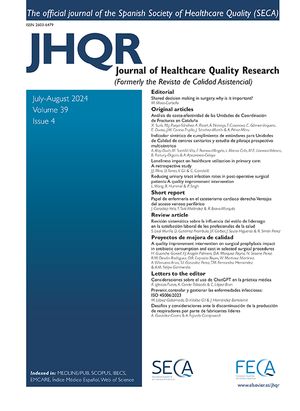Las vías clínicas son instrumentos para planificar y coordinar la secuencia de procedimientos médicos, de enfermería y administrativos necesarios para conseguir la máxima eficiencia en el proceso asistencial. Su rápida diseminación en los EE.UU. explica que más del 60% de los hospitales norteamericanos usen vías clínicas para sus procesos más frecuentes. Esto contrasta con su escasa implantaci ón en nuestro país donde la expectativa de un futuro pago prospectivo por grupos relacionados de diagnóstico (GRD) está generado un creciente interés y una gran demanda de investigación y formación respecto a este tipo de instrumentos. Sus pretendidas ventajas son por el momento teóricas ya que se fundamentan más en opiniones de expertos que en resultados de estudios controlados y aleatorios. En cambio presentan limitaciones prácticas como la dificultad de aplicarlas con éxito a diagnósticos médicos que presenten un curso clínico muy variable. Su diseño requiere la combinación del método formal de consenso para valorar la experiencia interna con las técnicas fundamentadas en la medicina basada en la evidencia para valorar la experiencia externa generando documentos que deben denominarse vías clínicas basadas en la evidencia. Su diseño es una secuencia formal y rigurosa resumida en siete etapas: 1. reclutamiento del equipo multidisciplinario, 2. combinar la experiencia de los profesionales con la revisión crítica de la experiencia externa -método formal de consenso y evidencia científica-, 3. responder las preguntas clínicas restantes mediante técnicas de medicina basada en la evidencia o métodos explícitos, 4. diseño de la vía clínica provisional y de indicadores para su evaluación, 5. realizar estudio piloto y la vía clínica definitiva, 6. implantar la vía clínica definitiva y 7. medir su impacto y reevaluarla periódicamente.
ConclusionesEstos instrumentos ofrecen grandes oportunidades para la mejora de la calidad a investigadores, clínicos, gestores y pacientes. A los investigadores que podrán dirigir sus esfuerzos hacia el perfeccionamiento de la investigación. A los clínicos que tienen la ocasión de mejorar sus actuaciones a partir de la estandarización de los cuidados y de establecer un clima de colaboración multidisciplinario. A los gestores cuya estrategia deberá ser la estandarización con la autonomía de las decisiones clínicas. Y a los ciudadanos que podrán participar en la planificación de sus cuidados, desde una nueva cultura de empowerment.
Clinical pathways are instruments to plan and coordinate the medical, nursing and administrative sequence of procedures in order to obtain the maximum efficiency in the healthcare process. Their rapid dissemination in the United States explains that more than 60% of american hospitals use clinical pathways for their more frequent processes. Contrarily in our country these tools are used little yet, however the expectation of a future prospective payment according to diagnostic related groups (DRG) generates a growing interest respect to this type of instruments. Their advantages are theoretical today since they are based rather than on opinions of experts that on controlled and random studies. On the other hand, these tools present practical limitations as the difficulty to applying them with success to medical diagnoses that present a very variable clinical course. Their design requires the combination of a formal consensus method to value the internal experience with techniques supported by the evidence- based medicine to measure the external experience generating documents that they should be designated as critical pathways based on the evidence. Their design can be a formal and rigorous sequence summarized in seven steps: 1. recruitment of multidisciplinary team, 2. to combine experience of professionals with critical review of the external experience -formal consensus method and scientific evidence, 3. to answer remaining questions through technical of medicine based on the evidence or explicit methods, 4. design of provisional chart ant to create quality indicators for their evaluation, 5. to accomplish a pilot study and definitive chart, 6. to implant definitive document, and 7. to measure their impact with a systematic review.
ConclusionsThese instruments offer large opportunities for quality improvement to investigators, clinicians, managers and patients. To researchers that they will be able to address their interest to the development better investigations. To clinicians that have the opportunity for improving their performances as of the standardization of the cares to establishing a collaboration climate. To managers whose strategy will have to be the standardization with the respect to the autonomy of clinical decisions. To citizens that they will be able to participate in the planning of their cares, from a new culture of empowerment.






